Maslow’s Hierarchy: A Path to Addressing Your Audience’s Hidden Needs
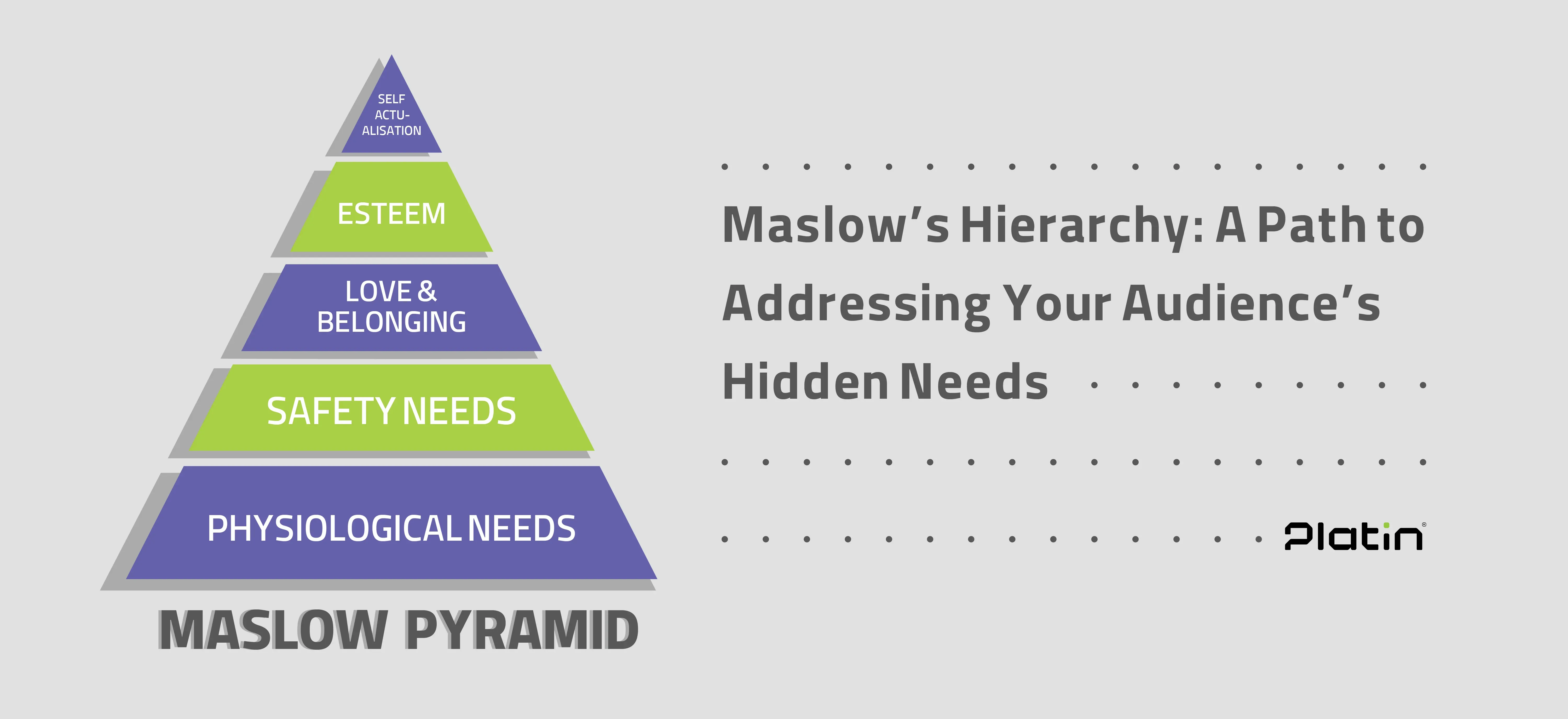
In today’s world, understanding your audience goes beyond age, gender, or geographic location. To build deep and lasting connections, brands must delve into the hidden layers of customer needs, motivations, and emotions. Maslow’s Hierarchy, a well-known psychological model of motivation, provides a clear roadmap for uncovering these needs—from basic necessities to long-term aspirations—helping brands foster loyalty and satisfaction. In this article, we explore, through the experience of Platin Marketing & Communications Agency, how Maslow’s Hierarchy can be applied in business modelling, customer loyalty programs, and go-to-market strategies.
Understanding Maslow’s Hierarchy and Its Marketing Philosophy
Developed by American psychologist Abraham Maslow in the 1940s, Maslow’s Hierarchy is one of the foundational models for understanding human motivation. It is based on the principle that individuals strive to fulfil a hierarchy of needs, from basic physiological requirements to self-actualization.
In marketing, this framework helps us determine where the audience stands within the hierarchy and which messages will resonate most effectively.
The Five Levels of Maslow’s Hierarchy and Their Role in Understanding Customers
- Physiological Needs: Food, water, sleep, shelter. In marketing, this translates to fulfilling the essential, basic needs of customers.
- Safety Needs: Financial, job, and health security. Products or services that provide peace of mind meet this need.
- Social Needs: Relationships, love, belonging. Brands that cultivate community or a sense of belonging address this level.
- Esteem Needs: Social status, confidence, recognition. Products that make customers feel valued target this need.
- Self-Actualization: Personal growth, fulfilment, talent realization. Services that empower customers to become their best selves fall into this category.
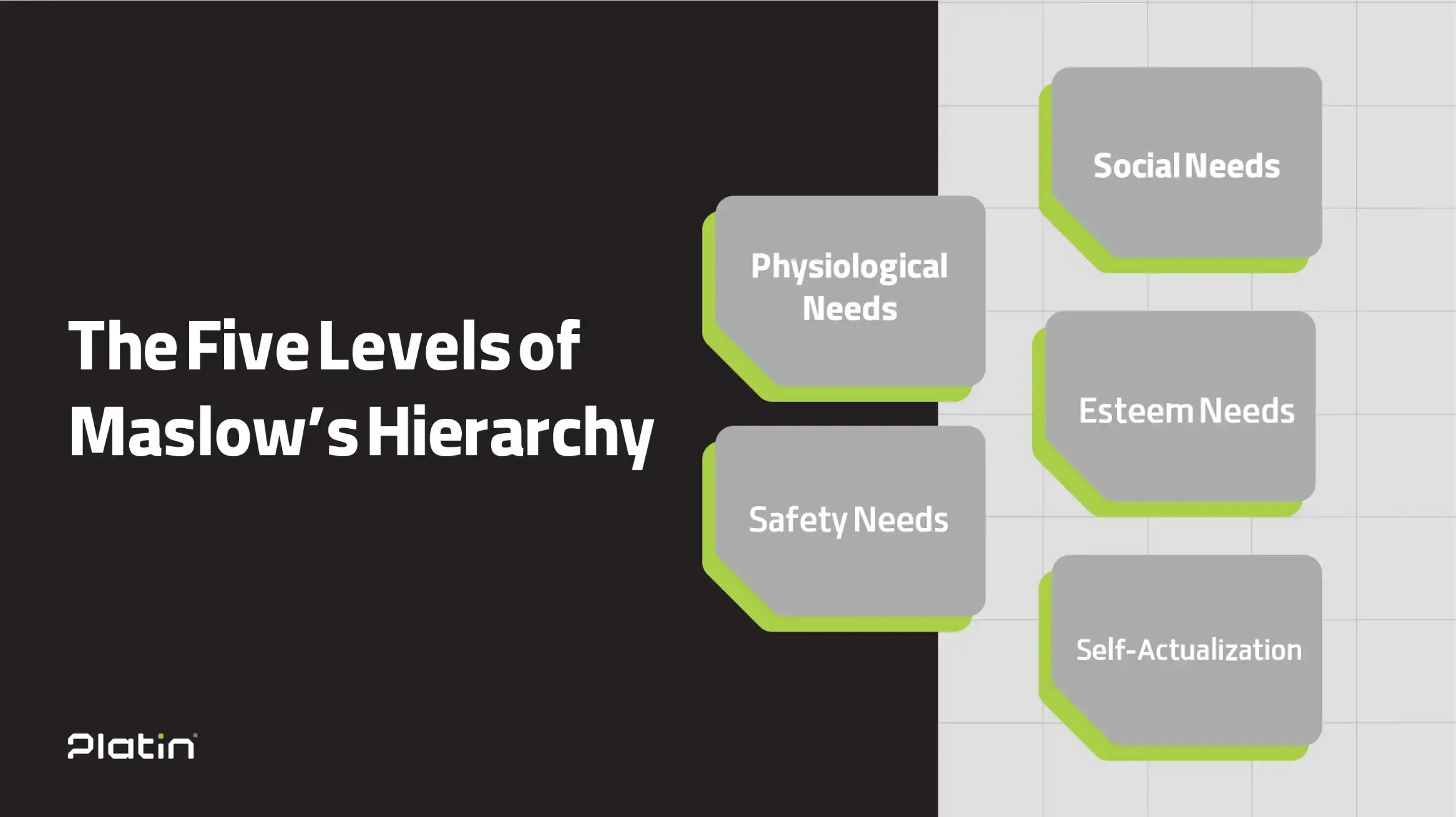
How Maslow’s Hierarchy Works in Modern Marketing
Modern marketing goes beyond product promotion; it’s about creating experiences that touch different layers of customer needs. By understanding a customer’s position within Maslow’s Hierarchy, marketers can craft targeted messages and strategies that foster not just purchase but long-term loyalty.
From Basic Needs to Self-Actualization
Successful brands first ensure their products or services meet customers’ basic needs. They then build a sense of security, belonging, and esteem, guiding the customer toward a stage where the brand becomes part of their identity. Ultimately, this relationship reaches self-actualization, where the customer feels the brand helps them lead a better life.
Examples of Global Brands Leveraging Maslow’s Hierarchy
Apple: Elevates customers to the highest level of the hierarchy by fostering creativity and social esteem.

Coca-Cola: Focuses on social connections and happiness, addressing social needs.
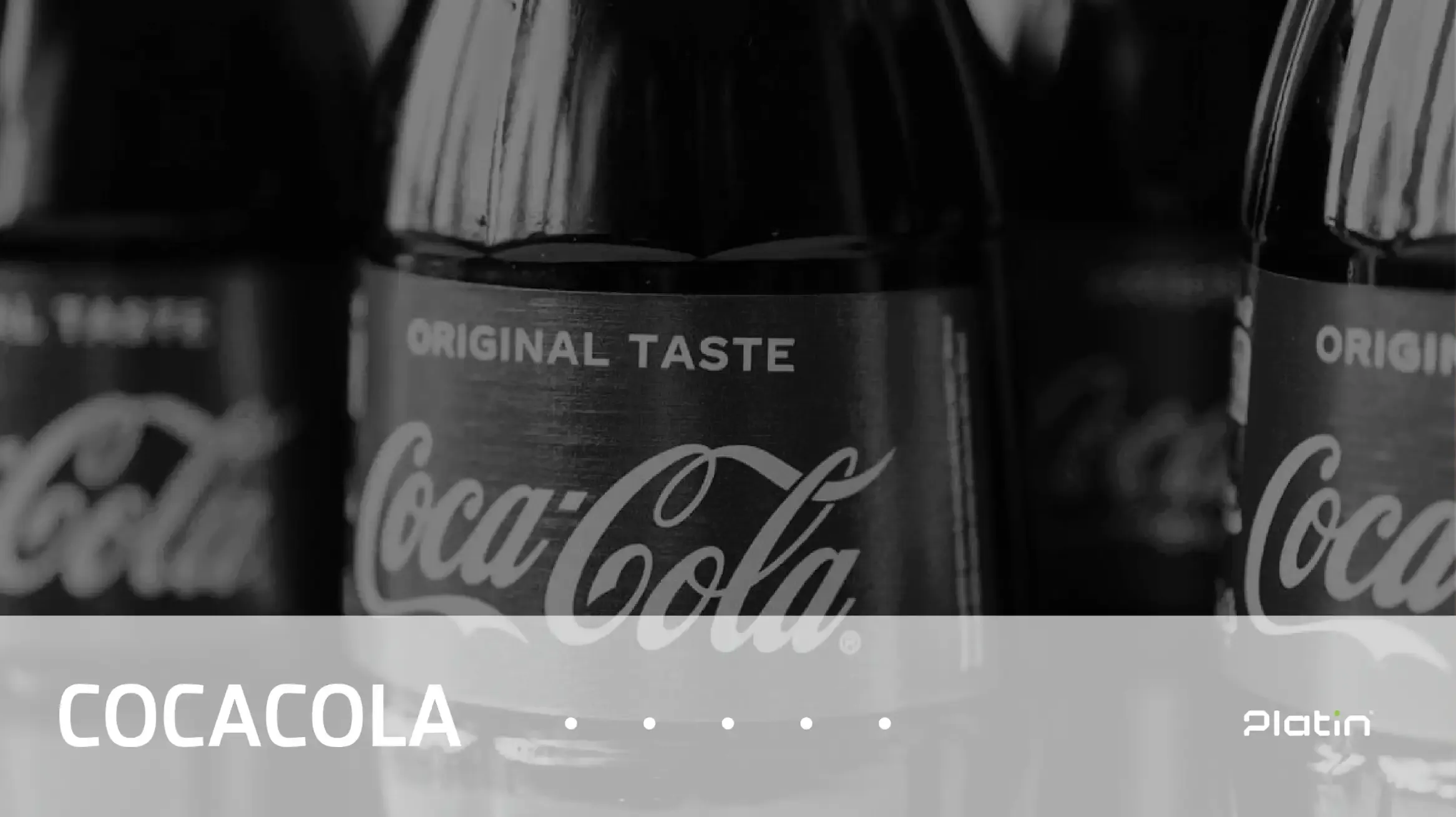
Insurance Companies: Provide financial security, targeting the second level of the hierarchy.
A Domestic Success Story: Gloria Campaign
In the “Gloria: Magic of Cooking” campaign, Platin Marketing & Communications Agency carefully designed and executed the strategy strictly according to Maslow’s hierarchy of needs:
- Physiological Needs: The campaign initially focused on satisfying the basic consumption needs. The product was positioned simply as a seasoning, served only alongside food.
- Safety Needs: By adjusting the brand messaging to highlight broader culinary applications and enhancing the flavor of dishes, the sense of reliability and trustworthiness in choosing the product was strengthened.
- Social Needs: The campaign engaged 17 influencers and ran an Instagram contest with the hashtag #GloriaMagic, creating a sense of belonging and community among the audience.
- Esteem Needs: Strong emotional connections were built through the message “Magic of Cooking” and psychologically-driven imagery using transparent cooking frames, fostering social recognition and a sense of prestige around the brand.
- Self-Actualization: Finally, the campaign motivated customers to use Gloria creatively in daily cooking, encouraging personalized and innovative culinary experiences. As a result, repeat usage increased, and Gloria shifted from being merely a side ingredient to becoming a staple on the main cooking table.
Addressing Hidden Customer Needs: Beyond Transactions
Successful marketing is rooted in understanding customers’ emotions, motivations, and hidden needs. Even unconsciously, many purchase decisions are driven by feelings rather than logic.
The Role of Emotions and Inner Motivations
Maslow’s Hierarchy reveals how emotional needs—belonging, esteem, self-actualization—affect customer choices. For instance, buying a luxury car may serve not just practical needs but also social recognition and personal identity expression.
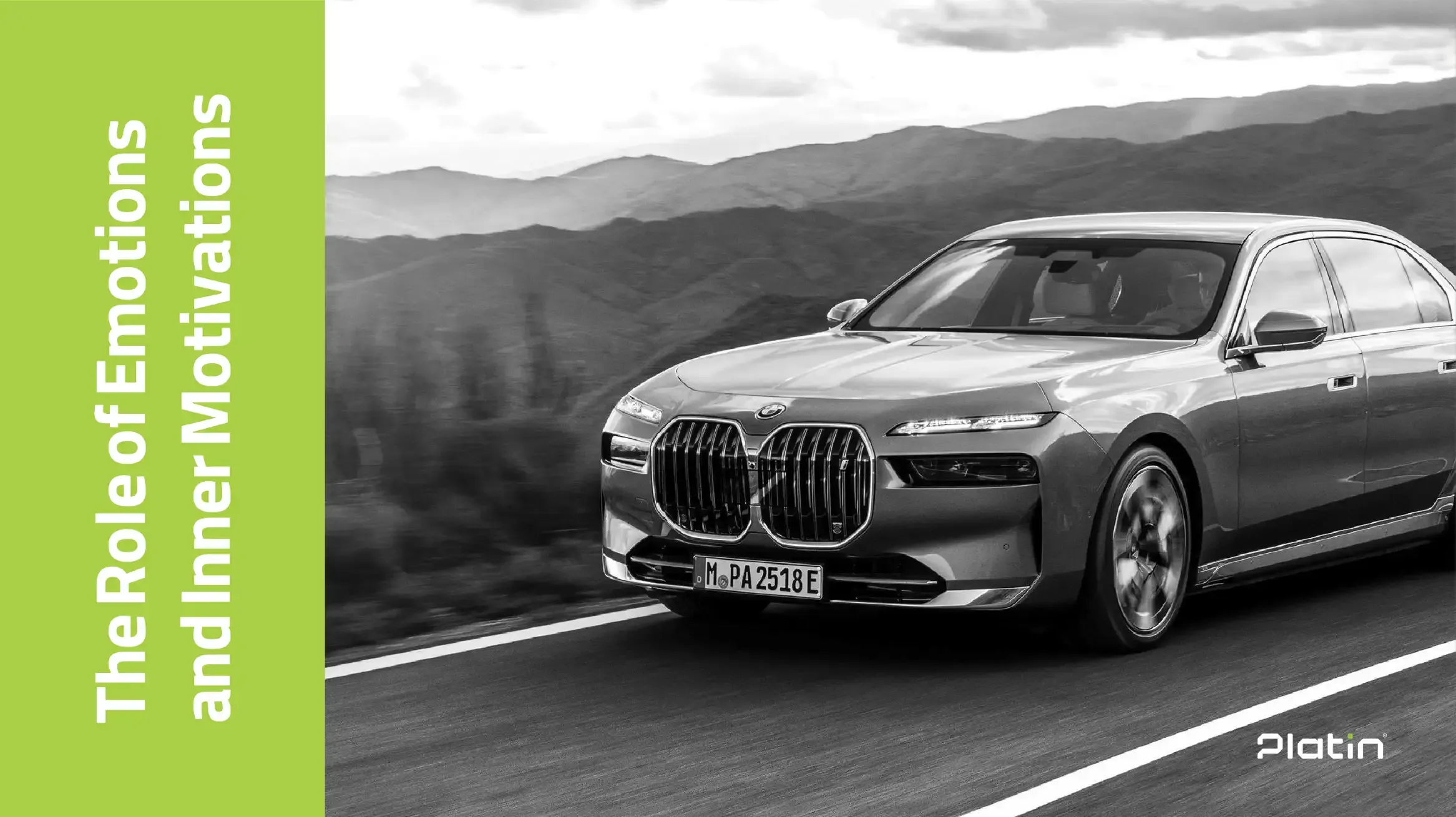
The Importance of Deep Customer Connections
Creating an emotional bond ensures customers choose your brand not only for price or features but also for trust, empathy, and belonging. This bond is what drives loyalty.
Applying Maslow’s Hierarchy in Business Modeling
A business model maps how value is created, delivered, and monetized. Integrating Maslow’s Hierarchy helps identify your product or service’s place in the customer’s mind and tailor marketing messages effectively.
Identifying Product Position in the Hierarchy
- Physiological Needs: Focus on performance, quality, and accessibility.
- Higher Levels (Esteem, Self-Actualization): Emphasize emotional value, personal growth, and customer aspirations.
Examples:
- Nike: “Just Do It” addresses not only sports needs but also builds confidence and motivation.
- Consulting Firms: Combine job security and self-actualization to deliver sustainable success.
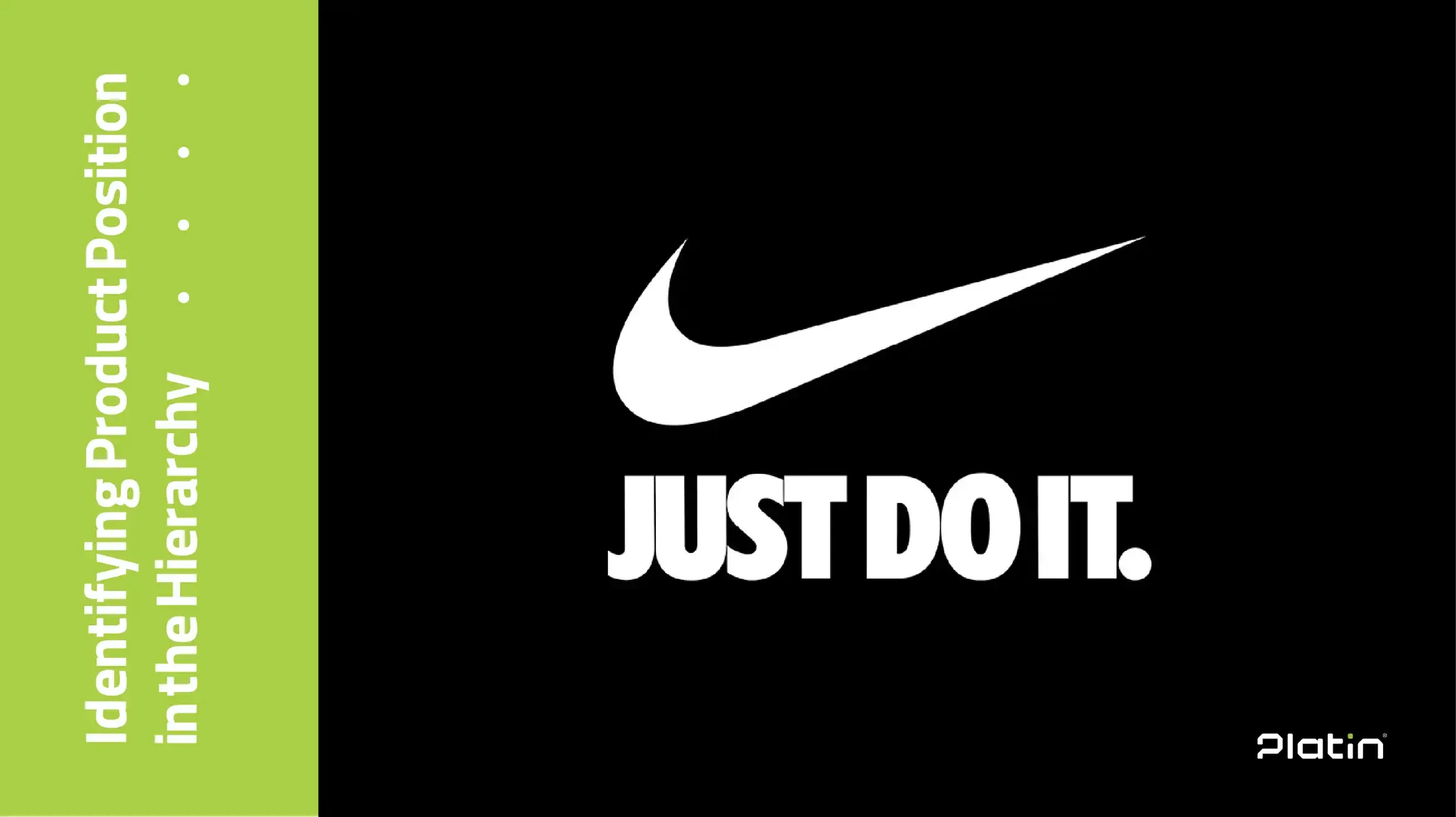
Maslow’s Hierarchy in Customer Loyalty Programs
Loyalty goes beyond repeat purchases; it’s about maintaining customer interest and advocacy. Using Maslow’s Hierarchy ensures loyalty programs create valuable experiences, not just discounts.
Fostering Belonging and Security
Personalized communication and post-sale services reinforce customers’ sense of value, addressing the second and third hierarchy levels.
Turning Customers into Brand Advocates
When customers experience respect, growth, and belonging, they not only repeat purchases but voluntarily act as brand ambassadors—the pinnacle of loyalty.
From Needs to Strategy: Smart Market Entry
Entering a market without understanding customer needs is like navigating in the dark. Maslow’s Hierarchy provides a clear roadmap to align market entry strategies with customer priorities.
Market Analysis Based on Customer Needs
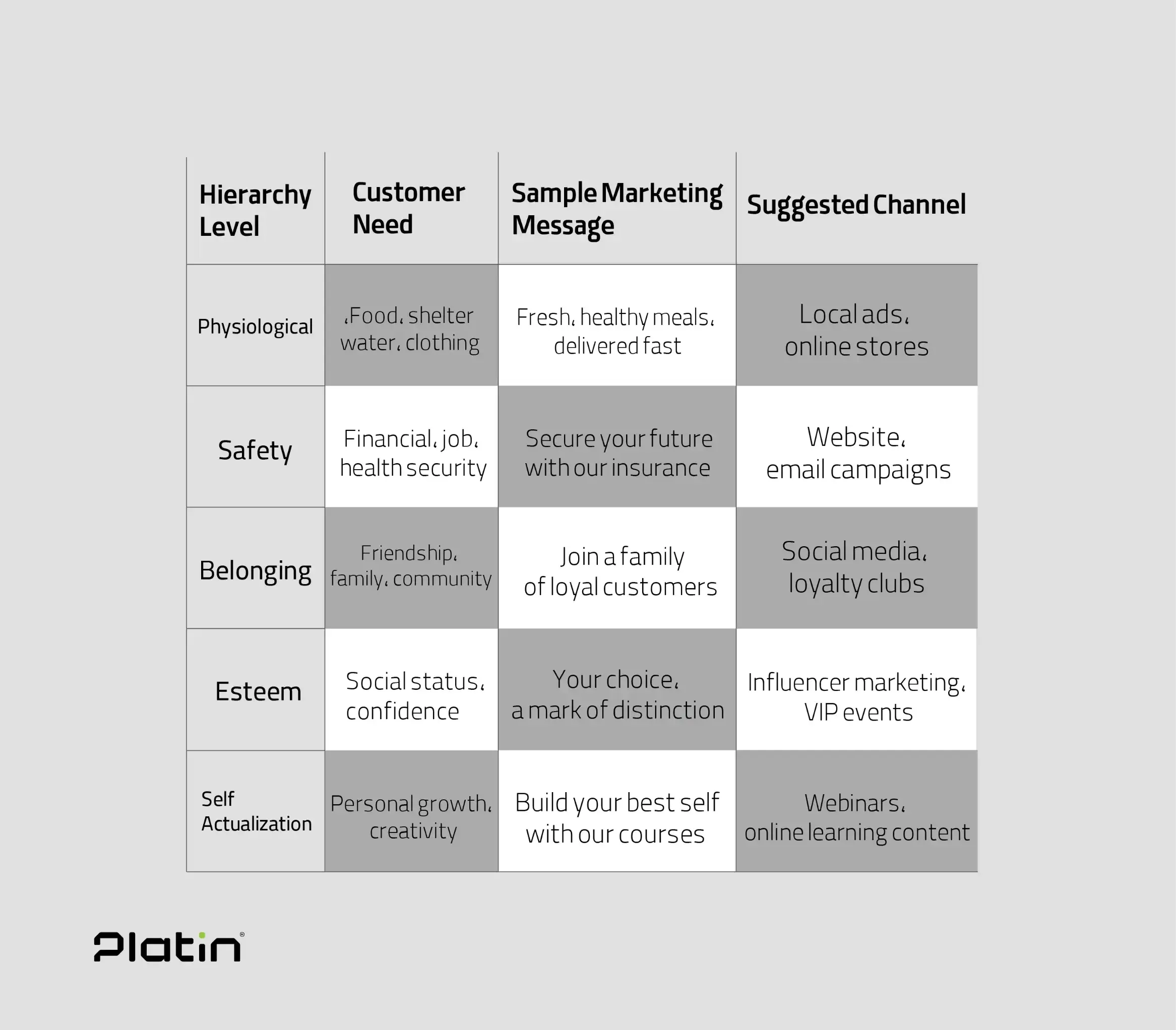
Maslow-Based Marketing Plans
An effective marketing plan aligns messages and channels with the customer’s hierarchy level.
Targeted Messaging and Channels
- Security-level customers respond better to messages of reliability and stability.
- Self-actualization-level customers prefer inspiring, educational content.
Storytelling for Higher-Level Needs
Emotional storytelling is powerful for esteem and self-actualization, activating feelings and turning customers into brand advocates.
Why Platin Marketing & Communications Agency?
Experience in Turning Theory into Results
At Platin, we combine psychological insights, Maslow’s Hierarchy, and practical experience to create strategies that drive real sales and sustainable branding.
If you want to uncover your customers’ hidden needs and leverage them for business growth, connect with us.